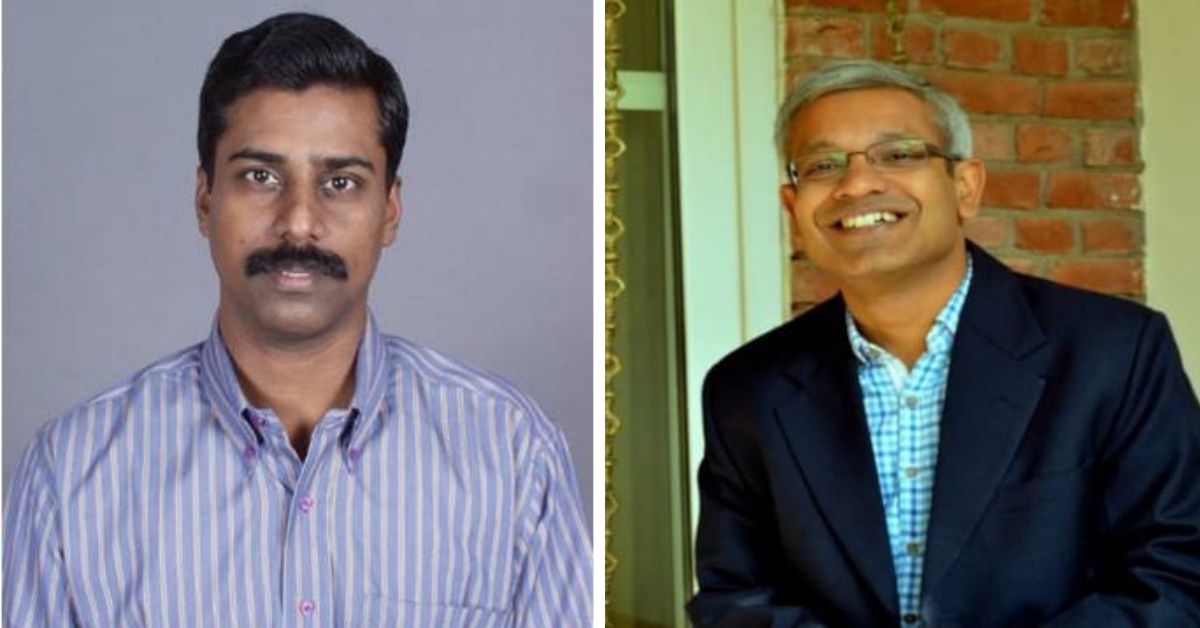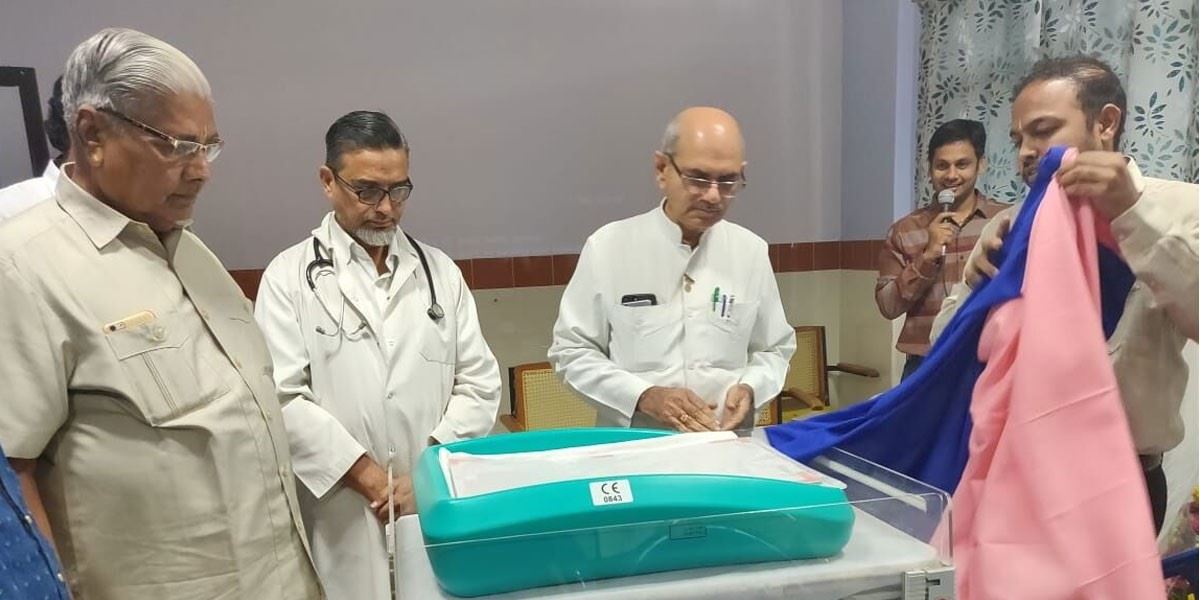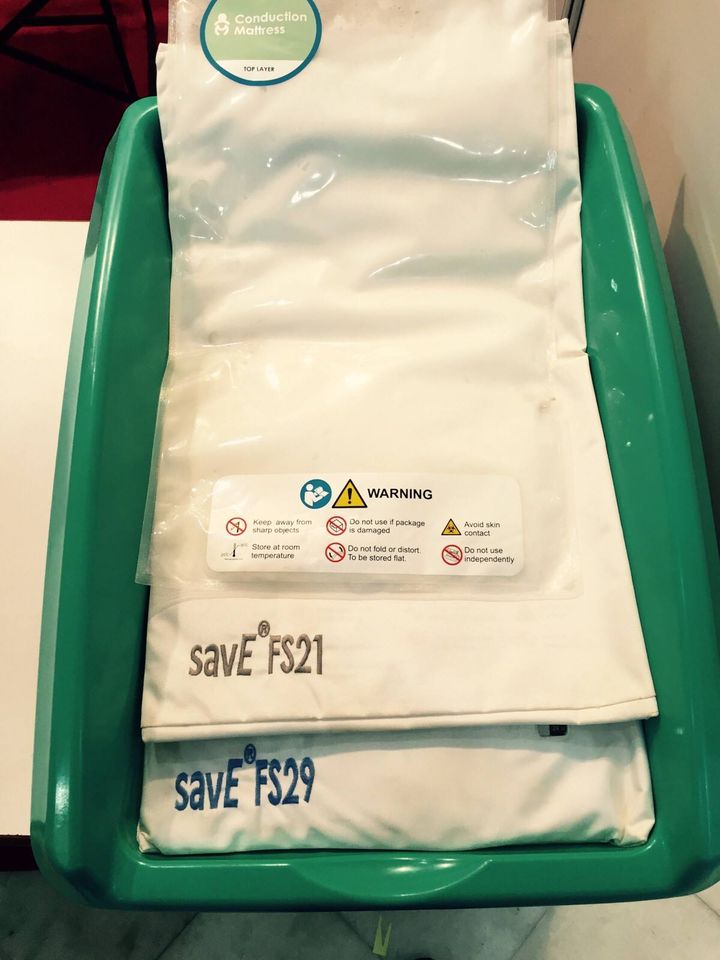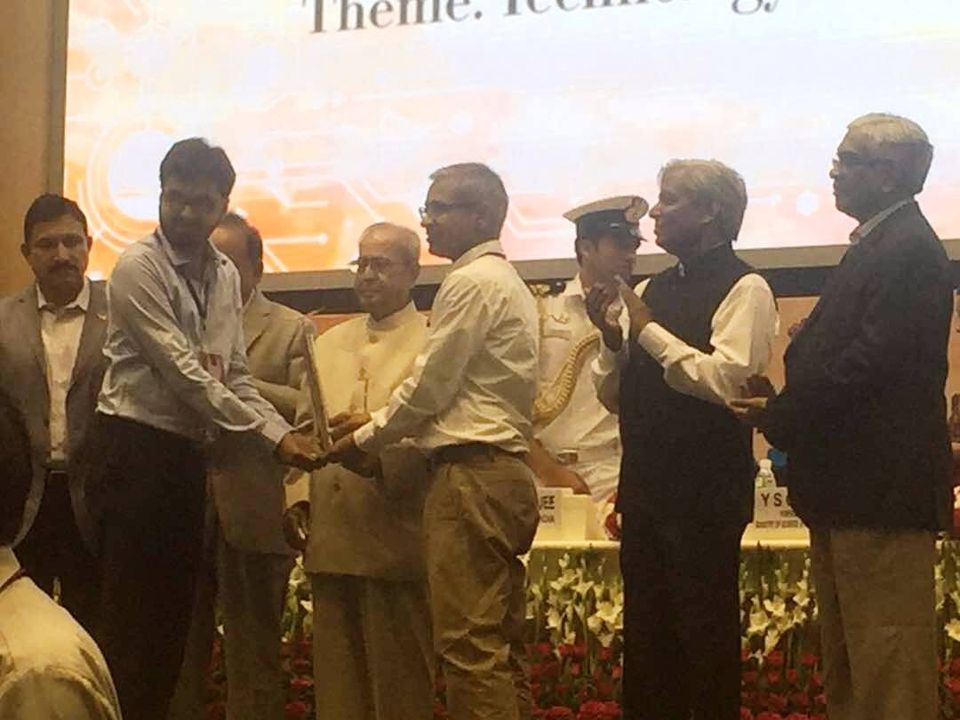Gurugram-based company Pluss Advanced Technologies (PAT) has manufactured a device to treat asphyxia, a condition caused by lack of oxygen in newborns. The device, called MiraCradle, is a “breakthrough innovation for developing nations like India,” says Samit Jain, managing director, PAT.
The device was ideated by Dr Niranjan Thomas in 2014, then working as the head of the Neonatology Department at Christian Medical College (CMC) in Vellore. It uses therapeutic hypothermia to treat the condition. He then approached PAT with the concept, and the two worked in collaboration to develop the device.
“Nearly 500 hospitals across the world are using MiraCradle to save the lives of newborns at low costs. In the last seven years, it has impacted the lives of more than 20,000 babies,” Samit tells The Better India.

Asphyxia is an extreme condition caused by lack of oxygen and excess of carbon dioxide in the blood. It can result in unconsciousness, which in turn may lead to death. The short-term effects of birth asphyxia include respiratory distress, high blood pressure, blood clotting problems, and kidney problems. If a baby stops breathing for about five minutes, there is a risk of brain damage. Other effects include cerebral palsy, sight or hearing impairment, hyperactivity, autism and spectrum disorder.
MiraCradle, which is specifically designed to address the condition, is a one-its-kind in India, despite a long line of devices already available in western countries. According to The Guardian, most hospitals in the country cannot afford the existing devices due to their high costs.
Noting this alarming gap, Dr Thomas decided to step in. He had seen the success rate of hypothermia therapy in Canada during work trips in the early 2000s. What followed were months of hard work, experiments, and learnings to develop an affordable model that had been missing in India.

“We conducted several rounds of deliberations to identify the right materials and Dr Thomas guided us with the results obtained with each choice. The next challenge was to create an ergonomic and affordable design for easy use at the clinical settings. We took the risk of hiring an industrial designer right at the stage of product development, something that was rare for an MSME. The product was the outcome of rigorous work spread over 18 months. Once it was ready, we conducted trials at hospitals outside CMC Vellore, obtained regulatory approvals such as CE for European standards, built awareness and created a robust distribution network,” says Samit.
How the device works
At present, the most common treatment for asphyxia in the western world is the use of automated devices, in which the baby is covered with a blanket that is filled with chilled fluid. The device adjusts automatically to the body temperature. Doctors in India use ice gel packs to control the baby’s temperature. However, as a result the babies are exposed to shivering and skin damage.
“Doctors tried low-cost methods, the most popular being the use of ice packs to cool the baby. Ice packs have several issues – there is no precision in temperature control, they need to be replaced frequently, and require high manual supervision. Ice also induces shivering, increases risk of fat tissue inflammation and causes severe chill burns,” adds Samit.
Dr Thomas and PAT’s device is simpler, lightweight, portable and more efficient. Called the ‘MiraCradle-Neonate Cooler’, the device costs under $2,500, which is ten times cheaper than imported devices that cost up to $25,000.
“MiraCradle is based on the advanced Phase Change Materials (PCM). The materials maintain a constant temperature control of 33-34 degree Celsius for a period of 72 hours. The device requires minimal manual supervision and no constant electricity supply. It releases a coolant or heat, as required. The device has six sheets layered in a plastic film. It has to be kept in the fridge for 8-10 hours before use,” says Dr Thomas, who is at present a consultant neonatologist in Joan Kirner Women’s and Children’s Hospital in Melbourne.

The baby is wrapped in sheets and kept in the plastic insulated cradle. A conduction mattress is kept on top that adjusts the temperature between the baby and the PCM. It takes around 50 minutes to stabilise the baby’s temperature.
PAT worked with neonatologists from various institutions such as CMC Vellore; JIPMER, Puducherry; St. John’s, Bengaluru and the Cradle to establish the credibility of the device.
“Clinical trials were conducted by a group of ten hospitals and the results were published in the Indian Paediatrics Journal. We have also conducted several workshops with this group of clinicians, and have supported the National Neonatology Forum of India in publishing a detailed manual on therapeutic hypothermia for treatment of birth asphyxia. These initiatives have helped build awareness and credibility, for both the therapy and the device,” says Samit.
Dr Sanjay Wazir, consultant neonatologist at Cloud Nine Hospital, Gurugram, says they have used MiraCradle for over 70 babies since 2014. “Birth asphyxia is one of the largest contributors to neonatal mortality in developing countries. The only approved and proven therapy which has been shown to decrease mortality and morbidity in this condition is therapeutic hypothermia or cooling the brain to reduce further damage. Unfortunately, like most technologies, the servo-controlled hypothermia machines are outside the budget of most governments and even private hospitals in India and other developing parts of the world. I think this is one innovation which is totally ‘Made in India’ and holds promise as a low-cost device to help babies with perinatal asphyxia.”

According to UNICEF, nearly 40 percent of neonatal deaths in India take place during labour or the first 24 hours after birth. Of those deaths, 20 percent are caused due to asphyxia. With so many children losing lives to a condition that can be treated, MiraCradle has the potential to significantly reduce fatality rate of birth asphyxia.
Get in touch with Pluss Advanced Technology here.
Edited by Divya Sethu
No comments:
Post a Comment